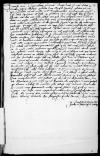Accepi litteras Generositatis Vestrae, datas ex ⌊Reitten⌋ 1516-10-27⌊XXVII Octobris1516-10-27⌋, 1525-11-05⌊quinta huius mensis Novembris1525-11-05⌋ allatas[2] ad me per quendam ad me missum a domino Vinsterwalter, quibus mihi mentem ⌊caesareae maiestatis⌋ significat, utpote, quod quantocius irem ⌊Insprugk⌋. Hoc quam facerem libenter, nec dici nec scribi potest, cur autem fieri impraesentiarum adhuc fieri non possit, intellexit ex litteris meis per Veit Hofer missis, in quibus omnes meas incommoditates et de famulo saucio etc. ac etiam de mea inopia perscripsi. Quaspropter Generositatem Vestram non rogo solum, verum confidenter obsecro, ut omnia ⌊caesareae maiestati⌋ exponat. Nihil renuo ⌊caesareae maiestati⌋, etiam si mox moriendum esset, dummodo clementius in me respiciat, ne videar omnibus hic mortalibus ludibrium. Ille[3], qui famulum meum fraudulenter ac praeter causam sat dignam vulneravit, versatur cotidie in oculis meis et creditur omnia, quae perfide gessit, impune egisse, non sine mea magna ignominia. Misereatur quaeso mei Generositas Vestra, si forsan ⌊caesarea maiestas⌋ mei misereri gravabitur, propter quam tot nuper subivi pericula et omnes meas fortunas apud ⌊serenissimum dominum meum⌋, domum, parentes, actiones, omnia denique mea reliqui, et consoletur me.
cf. Vulg. Est. 4:1 spargens cinerem capiti et in platea mediae civitatis voce magna clamabat ostendens amaritudinem animi sui ⌊Prae amaritudine animicf. Vulg. Est. 4:1 spargens cinerem capiti et in platea mediae civitatis voce magna clamabat ostendens amaritudinem animi sui ⌋ ac dolore summo plus de his scribere nequeo, videntur enim hae levitates mihi soli non illatae, sed domino etc. Praeterea quomodo mihi nunc est eundum? Viaticum non habeo. 1516-11-04⌊Heri1516-11-04⌋ accepi in mutuum non sine rubore a domino doctore ⌊Conrado Peutinger⌋ quindecim Renenses, cum quibus usque ad Generositatis Vestrae adventum vivere decrevi. Nihil recuso pro ⌊caesarea maiestate⌋, immo fideliter, ut consuevi, serviam, et serviam quam diu in vivis fuero. Consideret modo ⌊sua maiestas⌋, in quibus iactor procellis, potis est me facile eruere. Iturus sum quocumque maiestas sua mandaverit, nec patriae me desiderium detinebit. Non sum ut aspalacus, qui non nisi apud Boeotios ms. Boecios(!)
⌈BoeotiosBoeotios ms. Boecios(!)
⌉, ubi nascitur, vivere potest[4]. Ego vivam undique et moriar, ubi ⌊maiestas caesarea⌋ voluerit. Proinde Generositatem Vestram rogo, procuret mihi apud maiestatem caesaream, quae in rem meam ex litteris meis expedire videbuntur. Confidenter confido Generositatem Vestram pro amico obsequentissimo facturam. Cui me iterum iterumque commendo.


 ONB, Cod. 13.597, f. 16v
ONB, Cod. 13.597, f. 16v